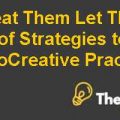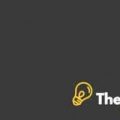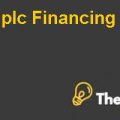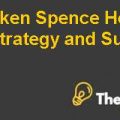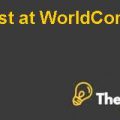A ROYAL DUTCH DISASTER Case Study Solution
Brief Summary
The case illustratesthe inadequate strategic management anddecisionmakingstrategyofthe AHOLD, a great foodretailerchain. Under the leadership of the CEO Van der Hoaven, the companyprogressed at the rate of 15 % earnings, however, theresultsshown have been fabricated and fraud in earning has been identified.The company faces severe strategic issues due to improper strategic plan, inadequate expansion strategy andmarket knowledge and incompatible board of directors which failed to see the storm coming.
Key Issues
The key issues identified in the case of the company’s failure have been the (1) too ambitious growth plan of the company investing in different markets simultaneously (2) fabricated revenues over the period of time, fooling the shareholders and hence the overall organization and Board of directors (3) the company expanded its international network without consolidating the resources, this created the tug of war and hence inefficient operations.
Key Decision Maker
The key decision maker in the case is CEO Hubris, who has been informal, greedy and reluctant to perform or produce solid internal controls and thus laid the wrong expansion and market penetration strategy. The decision-making criteriaare analysis of the market growth, market trends, consolidation of resources, theright depiction of revenues and lastly the overall performance for the period.
Alternative
The alternatives to resolve the issues can be (1) thecompany should develop the key internal control using standard guideline from accounting. This will allow the company to catch any fraudulent activity beforehand, before landing in any market. (2) the company should use the decision-making criteria and tools like strategic planning to decide on the corporate expansion strategy, this will give a more realistic picture of the market and the competition and hence will save the company from great losses.
Recommendation
Perhaps, by analyzing the overall situate, it is recommended that the company should use the strategic management tools to decide the corporate expansion strategy. This will help the company inidentifying the market trends, customer behaviour, and competitive landscape and will help in making a competitive strategy and resource base to capitalize the opportunity.This will also help in aligning the strengths with opportunities the market and leveraging the weakness and threats against the opportunity and strength of the company.
A royal Dutch disaster Harvard Case Solution & Analysis
Key Takeaways
The takeaways of the case are (1) thedevelopment of internal controls is important to develop asound organization structure (2) the board of directors needs to be actively participating in decision-makingprocess (2) too much aggressive goals lead the company to failure hence the aggressive goals should not be set in the growth periods (4) the market study is important for the successof the business.
Key Takeaways related to the professional lives:
The Key takeaways which had been identified after analyzing the case which would help in our professional lives or careers are:
- Goals which are not SMART generally result in the failure in achieving the goals and would also negative impact on company performance.
- The board of directors must be involved when it comes to making big decisions or they would blame other executives.



